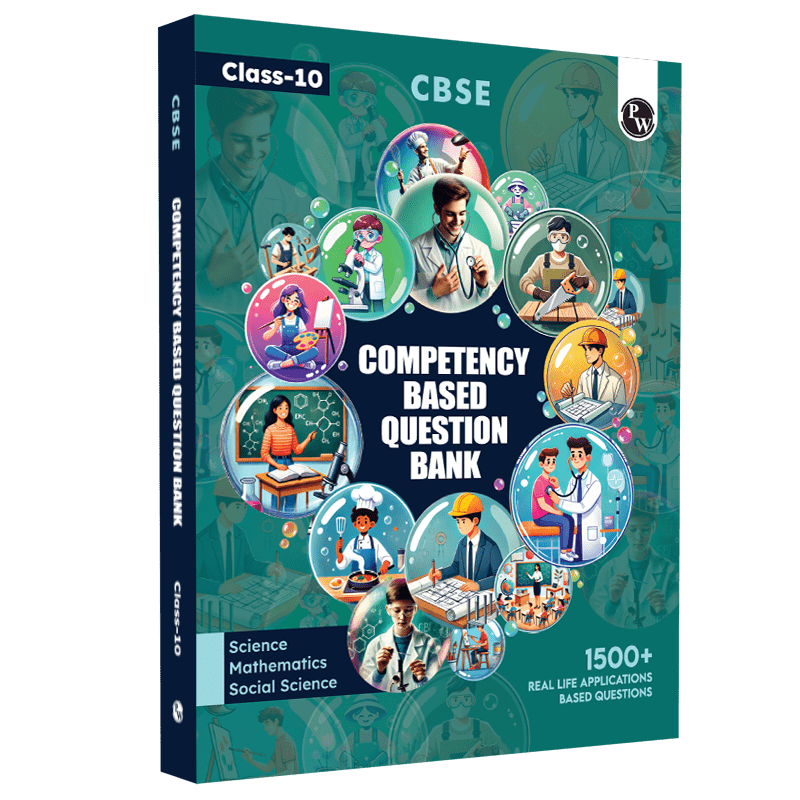NCERT Solutions for Class 10 Civics Chapter 4 Gender, Religion, and Caste

NCERT Solutions for Class 10 Civics Chapter 4 Gender, Religion, and Caste: Are you having trouble understanding the topics of Gender, Religion, and Caste in your Class 10 Civics book? This chapter is not just for exams but it helps you learn about India’s unique social structure and the problems we face.
This chapter talks about important ideas like fairness for men and women, how religion affects politics, and how caste plays a role in democracy. These are big topics, but they are explained in a way that’s easy to understand and interesting too.
Think about how great it would feel to answer exam questions clearly and confidently! With these NCERT Solutions for Class 10 Civics Chapter 4, you’ll understand the chapter better and be well-prepared for your tests. Read this simple and complete guide to learn gender, religion, and caste class 10 question answers. It will help you understand the topics, answer questions easily, and do well in your exams.
Check out: CBSE Class 10th Books
Importance of Gender, Religion, and Caste in Society
This gender religion and caste chapter talks about some really interesting ideas that affect all of us:
-
Gender Equality: Why do men and women sometimes get treated differently? What can we do to make things fair for everyone?
-
Religion and Politics: How does religion influence the way people vote or how leaders make decisions?
-
Caste System: What is caste, and why does it still matter so much in today’s world?
Each topic shows how these issues shape our lives and our society. The examples and stories in the chapter make it easy to understand these big ideas.
NCERT Solutions for Class 10 Civics Chapter 4: Gender, Religion, and Caste
Each topic of class 10 civics chapter 4 shows how these issues shape our lives and our society. The examples and stories in the chapter make it easy to understand these big ideas.
Gender Equality?
Gender equality means providing the same rights and opportunities to everyone, regardless of gender. However, in many parts of the world, including India, gender inequality persists.
in Gender Equality:
-
Education: Many girls do not have access to quality education due to societal and financial constraints.
-
Employment: Women often face wage gaps and limited opportunities for advancement in the workplace.
-
Political Representation: Women hold a small percentage of seats in legislative assemblies and parliament.
Efforts to Promote Gender Equality:
-
Reservation for Women: Policies ensuring a percentage of seats for women in local governance.
-
Educational Campaigns: Encouraging families to educate their daughters.
-
Workplace Reforms: Ensuring equal pay for equal work and implementing strict anti-harassment policies.
How Religion Influences Society and Politics
Religion plays a significant role in shaping societal values, but it can also be a source of division. This chapter explains how communalism and secularism interact in India.
Forms of Communalism:
-
Communal Violence: Conflicts between religious groups leading to unrest.
-
Religious Mobilization: Political parties using religion to gain support.
-
Religious Fundamentalism: Believing one’s religion is superior to others.
Importance of Secularism: India’s Constitution ensures equal treatment of gender and religion. Secularism fosters unity and prevents discrimination based on religious beliefs.
Steps to Maintain Religious Harmony:
-
Promoting interfaith dialogues.
-
Implementing laws to curb hate speech.
-
Encouraging cultural exchanges between communities.
Important Questions to Remember:
Understanding the Caste System
The caste system has been a defining feature of Indian society for centuries. While its influence has reduced, it still impacts access to resources and opportunities, and find caste class 10 question answered below.
Challenges of the Caste System:
-
Discrimination: Lower castes often face exclusion and unfair treatment.
-
Economic Inequality: Caste affects job opportunities and income levels.
-
Political Manipulation: Leaders sometimes use caste identities to gain votes.
Government Measures to Reduce Caste Inequality:
-
Reservation Policies: Providing representation in education, jobs, and politics for Scheduled Castes (SCs) and Scheduled Tribes (STs).
-
Legal Protections: Acts like the Prevention of Atrocities Act.
-
Awareness Campaigns: Educating people about the harms of caste discrimination.
Check out: CBSE Class 10th Sample Papers
Gender religion and caste class 10 question answer
Get gender religion and caste class 10 question answer that is important and need to remember.
-
When we speak of gender divisions, we usually refer to:
-
Biological differences between men and women
-
Unequal roles assigned by society to men and women
-
Unequal child sex ratio
-
Absence of voting rights for women in democracies
Ans: (b) Unequal roles assigned by society to men and women
2. In India, seats are reserved for women in
-
Lok Sabha
-
State legislative assemblies
-
Cabinets
-
Panchayati Raj bodies
Ans.(d) Panchayati Raj bodies
3. Mention different aspects of life in which women are discriminated or disadvantaged in India.
Ans: Women in India are discriminated against in politics, spheres of education, economic rights, status, and opportunities.
4. State different forms of communal politics with one example each.
Ans: When religion is used in politics it becomes major problem for any country, as the people of that country start considering religion as the basis of the nation and this gives birth to communal politics. In a communal society, one religion is given preference over another. The followers of one religion face discrimination as the State power promotes the interest of one religious group. In India, many parties are formed along communal lines. Like Muslim League during freedom struggle, Akali Dal in Punjab, DMK in Tamil Nadu etc. Parties consider religion as one of the important criteria in choosing candidates for elections. People vote for their religion in elections. Sometimes this becomes a problematic thing and leads to agitation among people.
5. Why are we discussing things like household work in this textbook on Political Science? Is this politics?
Ans: No, it’s not politics. It is important to discuss the sexual division of work to improve the condition of women in India.
6. Why not? If politics is about power, then surely male dominance in the household should be considered political.
Ans: Dominance at the cost of others cannot be considered political and constitutional.
7. Which among the following statements about the Indian Constitution is wrong?
(i) Prohibits discrimination on grounds of religion.
(ii) Gives official status to one religion.
(iii) Provides all individuals freedom to profess any religion.
(iv) Ensures equality of citizens within religious communities.
Ans (ii) Gives official status to one religion.
8. How are caste inequalities continuing in India? Explain.
Ans: Caste problems have not completely been disappeared from India. Most people cease to marry outside their caste. Untouchability is still practiced in some parts of India.
9. State two reasons to say that caste alone cannot determine election results in India.
-
1. No candidate wins all the votes of their community.
-
2. A vote of a single community does not lead to victory. So, candidates have to win the hearts of the people of other communities. Some voters have more than one candidate from their caste, whereas others have no candidate from their caste.
Above mention are important gender caste and religion class 10 question answers. Make sure to read it thorughly.
Check out: CBSE Class 10th Question Banks
How These Issues Shape Democracy
-
Gender and Democracy: Equal representation of women leads to better decision-making and governance.
-
Religion and Secularism: Secular policies ensure fairness and harmony in a diverse society.
-
Caste and Representation: Reservation policies promote inclusivity and ensure marginalized groups have a voice in governance.
Exam Preparation Tips need to be Remember
-
Understand the Concepts:
Focus on understanding the underlying causes and long-term effects of gender, religion, and caste issues. For example, consider how gender inequality limits societal progress or how caste-based discrimination perpetuates economic disparity.
-
Take notes as you study and summarize each topic in your own words.
-
Use diagrams or flowcharts to visualize relationships between these issues.
-
Use Real-Life Examples:
Relating these topics to current events or historical examples can make your answers more compelling and relatable.
-
Example for gender: Discuss women’s representation in politics, citing the percentage of female legislators in recent elections.
-
Example for religion: Mention initiatives promoting interfaith harmony or laws addressing hate crimes.
-
Example for caste: Highlight reservation policies and their impact on education or job opportunities.
-
Practice Questions:
Solve exercises from NCERT and past exam papers to reinforce your knowledge and improve answer-writing skills.
-
Write mock answers for long-form questions to practice structuring your thoughts.
-
Time yourself while solving questions to build confidence for exams.
-
Review your answers to identify areas where you can improve clarity or depth.
The chapter on Gender, Religion, and Caste is not just about scoring marks in exams. It teaches valuable lessons about fairness, equality, and respect. By understanding these issues, students can become informed citizens and contribute to building a more inclusive and just society.
Check Out: CBSE Class 10th Revision Books
Class 10 Civics Chapter 4 FAQs
-
Why is secularism important in a diverse country like India?
Secularism ensures that all religions are treated equally, preventing discrimination and promoting harmony among different communities.
-
What is the importance of education according to NCERT Chapter 4?
The NCERT highlights education as a powerful tool to bridge social inequalities, empower marginalized groups, and promote awareness about democratic rights and duties.
-
How can students contribute to reducing gender inequality?
Students can advocate for equal opportunities, support campaigns for girls' education, and raise awareness among peers about gender equality.
-
What solutions does the NCERT suggest for caste-based inequality?
The NCERT suggests implementing reservation policies, creating legal safeguards, and conducting awareness campaigns to reduce caste-based discrimination.











